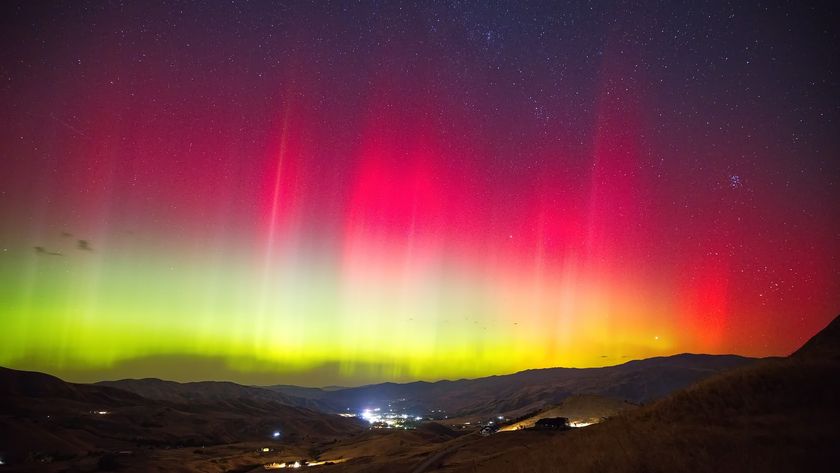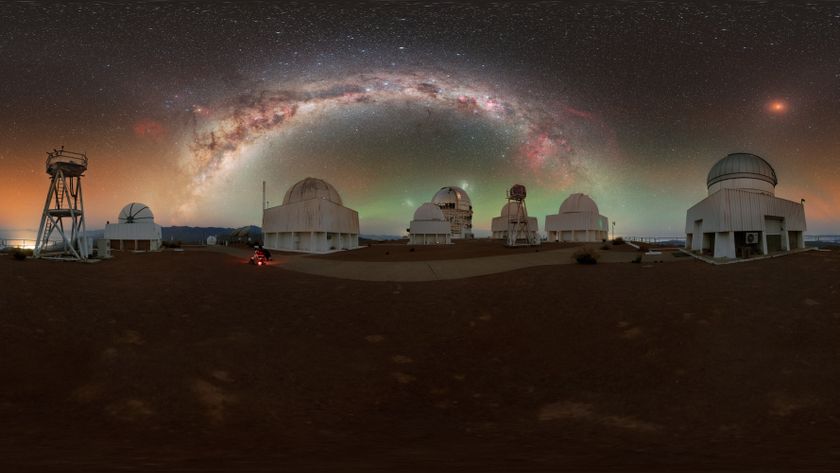Destination Pluto: NASA's New Horizons Mission in Pictures
Pluto's North Pole Canyons Annotated
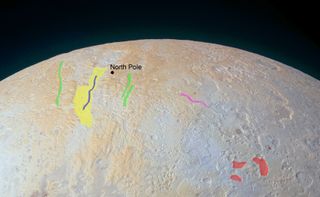
Pluto's north pole canyons annotated.
Pluto Four Moons Closeup
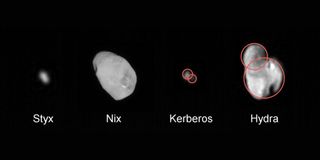
These close views of Pluto's four smaller moons were captured by NASA's New Horizons probe during its historic July 2015 flyby. Data from New Horizons suggests that at least two (and maybe even all four) were born from mergers of even smaller moons.
Pluto Crater Counts
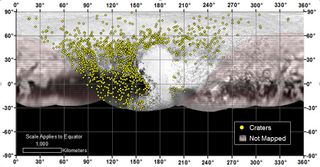
By counting craters across Pluto, scientists determined that some regions of the dwarf planet are as young as 10 million years old while others are nearly as old as the 4.5-billion-year-old solar system.
Back-lit, Blue-skied Pluto

Back-lit, blue-skied Pluto is still a planet in the heart, though not in official registers.
Snakeskin Ridges on Pluto
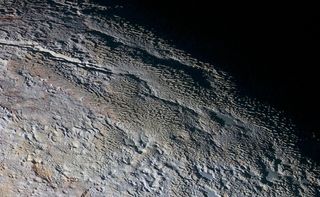
Snakeskin ridges on Pluto may have been shaped by surface winds, one way Pluto's atmosphere could have contributed to the dwarf planet's unusual features.
Sunset View of Pluto
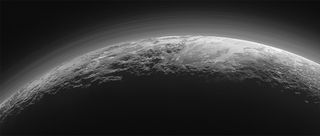
NASA’s New Horizons spacecraft looked back toward the sun 15 minutes after its closest approach to Pluto on July 14, 2015, capturing this near-sunset view of the dwarf planet’s icy mountains and flat ice plains. The image was taken from a distance of 11,000 miles (18,000 kilometers) from Pluto; the scene is 780 miles (1,250 km) wide.
New Horizons' Zoomed-in Sunset View of Pluto
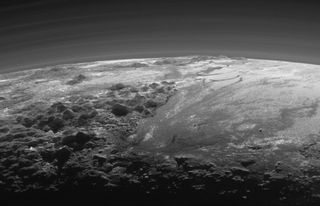
A zoomed-in view of a photo NASA’s New Horizons probe took on July 14, 2015, when it was just 11,000 miles (18,000 kilometers) from Pluto. The near-sunset scene, which is 230 miles (380 km) across, shows rugged ice mountains up to 11,000 feet (3,500 meters) high and wide, flat plains.
Get the Space.com Newsletter
Breaking space news, the latest updates on rocket launches, skywatching events and more!
Fog on Pluto
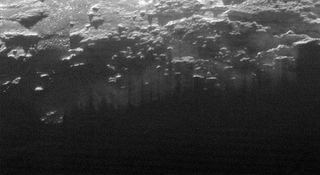
The setting sun illuminates fog or near-surface haze on Pluto in this small section of an image taken by NASA’s New Horizons probe on July 14, 2015, when it was 11,000 miles (18,000 kilometers) from the dwarf planet. The image covers a stretch of land 115 miles (185 km) wide.
Vast Ice Plains in Pluto's Heart
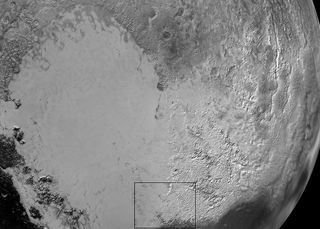
This image, a composite of several photos taken by NASA’s New Horizons probe, shows a vast Pluto ice plain called Sputnik Planum. The box shows the location of other detailed glacier images.
Flowing Ice on Pluto's Plains
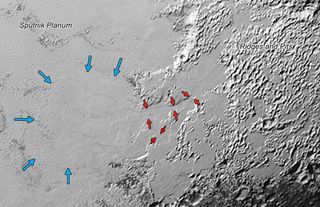
This New Horizons image shows how ice (probably frozen nitrogen) is flowing from Pluto’s mountains through valleys (outlined by red arrows) onto the plains known as Sputnik Planum; the “flow front” there is outlined by blue arrows in this photo, which covers an area 390 miles (630-kilometer) wide.
Join our Space Forums to keep talking space on the latest missions, night sky and more! And if you have a news tip, correction or comment, let us know at: community@space.com.

Space.com is the premier source of space exploration, innovation and astronomy news, chronicling (and celebrating) humanity's ongoing expansion across the final frontier. Originally founded in 1999, Space.com is, and always has been, the passion of writers and editors who are space fans and also trained journalists. Our current news team consists of Editor-in-Chief Tariq Malik; Editor Hanneke Weitering, Senior Space Writer Mike Wall; Senior Writer Meghan Bartels; Senior Writer Chelsea Gohd, Senior Writer Tereza Pultarova and Staff Writer Alexander Cox, focusing on e-commerce. Senior Producer Steve Spaleta oversees our space videos, with Diana Whitcroft as our Social Media Editor.










